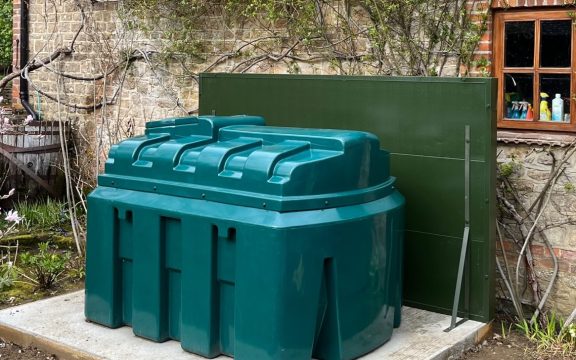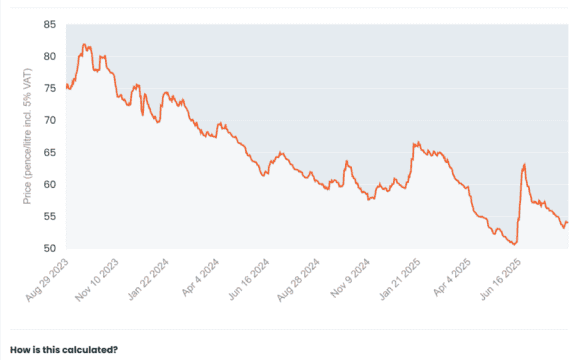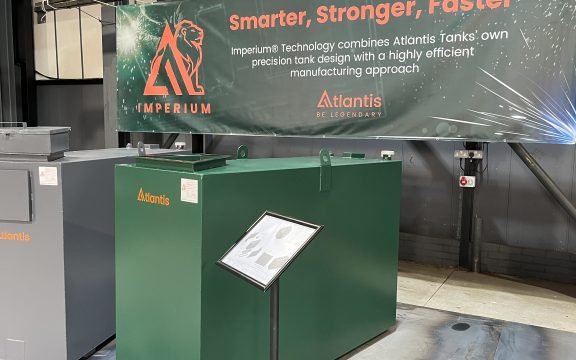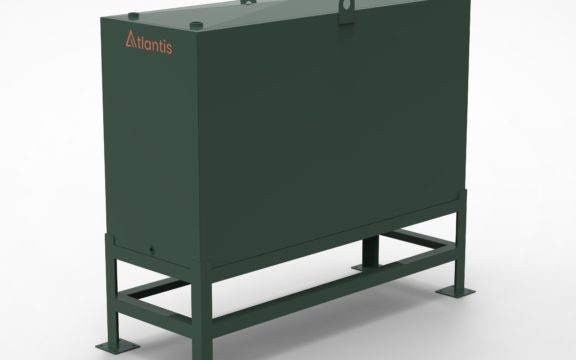Are Plastic Bunded Oil Tanks Any Good?
Heating oil storage tanks have traditionally been made of steel, a material that has become a byword for strength. So why is plastic becoming a fast-growing and popular alternative? As there is no single, simple answer to this question, let’s look at the several factors that combine to make plastic a preferred choice for heating oil storage.
Is Plastic Strong Enough?
To anyone accustomed to storing heating oil in a sturdy welded steel tank and with little knowledge of polymer technology, plastic may seem a strange alternative. But the materials used to manufacture oil tanks are no ordinary plastics, and the technology that goes into designing and manufacturing them ensures they are more than strong enough for the task they have been given.
Plastic oil tanks are made from one of two high-quality polymers: high-density polyethylene (HDPE) and cross-linked polyethylene (XLPE).
HDPE is the most commonly used of the two as it has a high strength-to-density ratio that is still robust enough for most heating oil storage environments while being slightly cheaper. It is widely used by many industries for its durability, resistance to chemicals and UV stability; factors that are essential for storing oil outdoors. It is also a relatively flexible material, and this adds to its resilience as it can absorb minor impacts that could cause cracks in welded steel joints.
XLPE has a cross-linked molecular structure. What does that mean? Well, with HDPE the strands of polyethylene lie parallel to each other – this is what makes HDPE more flexible – whereas with XLPE the strands are woven together. It is this cross-linking process that makes XLPE tanks more expensive, but the additional strength and resistance to chemicals and heat mean that it is less likely to crack under stress. XLPE is therefore generally preferred for high-capacity and commercial oil storage tanks.
When used to manufacture oil storage tanks, both plastics are mixed with UV stabilisers to minimise the damaging effects of sunlight.
What Are the Benefits of Plastic Bunded Tanks?

Dual installation of plastic bunded oil tanks showing their versatility
Plastic bunded oil tanks have many advantages over the traditional steel alternative.
For a start, plastic is much lighter in weight than a steel tank of the same strength and capacity. This makes it easier – and therefore cheaper – to transport and install.
It also doesn’t have the problem of corrosion, even in harsh weather conditions and coastal environments. As a result, a plastic tank won’t require periodic rust treatment and repainting to prevent holes and cracks from developing.
The rotational moulding process used to manufacture plastic oil tanks means that it is a single, seamless component without welded seams – potential weak points that can encourage corrosion or fail under stress.
Both plastics, but HDPE in particular, are highly resistant to impact and are less likely to suffer damage from minor bumps during transportation, installation and over time.
What’s a Bunded Tank and Do I Need One?
A bunded tank is essentially a tank within a tank, with the inner skin containing the heating oil and the outer skin serving as a safety measure. Any leaks or spills from the inner tank will be captured by the ‘bund’ created by the space between the inner and outer skins, which is large enough to contain the entire contents of a full tank if required. The outer skin also protects the inner skin and its contents from external impact.
Regulations have been introduced to make bunded tanks essential for all heating oil storage, with a few exceptions. This is because they offer far superior environmental protection than traditional single-skinned tanks, which are gradually being phased out.
For this reason, even if you are currently allowed to install a single-skinned tank, upgrading to a bunded tank if you are installing one for the first time or replacing an old tank would be a sensible decision.
What Certification Do Plastic Bunded Tanks Need in the UK?
While a bunded tank is one requirement for heating oil tanks in the UK, safety and environmental protection places strict standards and certifications on their manufacture and installation.
British Standard 5410
All oil storage tanks in the UK must comply with British Standard 5410 (BS 5410) which outlines installation and usage regulations for oil storage. This covers details such as the siting of an oil tank in proximity to buildings, boundaries and heat sources to minimise fire hazards.
OFTEC Certification
The Oil Firing Technical Association (OFTEC) provides additional certifications, such as OFS T100 for plastic tanks. OFTEC certification means a tank meets rigorous design, quality and safety standards and has been manufactured under controlled conditions.
It’s also worth noting at this point that while it isn’t currently a legal requirement for an oil tank to be installed by an OFTEC-registered technician, it may be required by an insurance company.
So, Are They Any Good?
The answer to this question is a firm “yes”. Plastic bunded oil tanks are more than adequate for domestic heating oil storage and many commercial applications. You may need to choose a steel tank if you are storing exceptionally high volumes of oil, say, more than 5000 litres; or when you require a bespoke tank design to fit into an irregular space. In summary, plastic is most certainly not an inferior alternative to steel.






